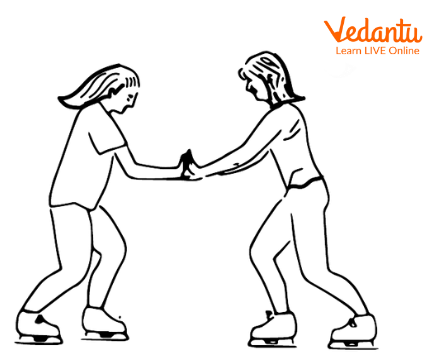




Let’s Learn About Newton’s Second Law of Motion for Kids
Newton's second law of motion for kids straightforwardly states that the rate of momentum is directly and proportional to the force applied to the object and takes place in the direction in which force is applied. The statement expresses that the acceleration of an item is subject to two factors - the net force acting on the object and the mass of the object. As the force applied to the article is increased, the speed increase(acceleration) of the item will also increase. As the mass of an object is increased, the speed increase(acceleration) of the item will decrease as it is inversely proportional to the mass.
Newton's Second Law For Kids
Newton's Second Law of Motion can be officially expressed as:
The speed or acceleration of an item depends upon the force acting on it and will increase if the force is increased and will decrease if the force is decreased. Similarly, the acceleration will decrease with an increase in mass and will increase with a decrease in mass.
a = F/m
where a = Acceleration
F = Total force acting on it
m = Mass
The above condition can also be written as the total force acting is equal to the product of mass and acceleration.
F = m × a
Here, the force is the total strength applied to the object. The acceleration is directly related to the net force; the net force rises when the mass is increased. The acceleration also increases with force. An acceleration is created by a net force. Recalling this difference is significant. As told above the acceleration takes place in the direction of the applied force which simply means that it is a vector quantity i.e. direction also changes with magnitude.
Steady with the above condition, a unit of force is equivalent to a unit of mass times a unit of acceleration. By substituting standard metric units for force, mass, and speed acceleration into the above condition, the accompanying unit equivalency can be composed.
1 Newton = 1 kg • m/s2
Newton’s Laws for kids
The meaning of the standard metric unit of force is expressed by the above condition. One Newton is characterized as how much force is expected to give a 1-kg mass an acceleration of 1 m/s2

Newton's First Law
An answer what are newton’s 3 laws for kids is given below:
The first law of movement expresses that: an item in rest will remain at rest until and unless an external force is applied to it.
For example, Your soccer ball won't move unless you kick it. When it's flying through the air, it will keep flying through the air except if it is dialled back via air obstruction, gravity's force (it tumbles to the ground), or your foot or body connecting with it.
The second law of movement expresses that: Acceleration happens when a force follows up on mass. The more prominent the mass, the more force is expected to cause acceleration. The harder you kick the soccer ball, the quicker it flies (speeds up). The bigger the soccer ball, the harder you should kick.
The third law of movement expresses that: for each activity, there is an equal and opposite response. At the point when you kick your soccer ball, it goes flying. As your foot returns, your body feels the force of the kick. You should move to keep your equilibrium. This is Newton’s third law definition for kids.

Newton’s Third Law
Summary
We have learnt what are Newton’s 3 laws for kids. And tells us how their components change concerning each other. This law has many practical implementations as well. It states that every action has an equal and opposite reaction. Let us take the second law of Newton, if a man pushes a loaded cart then he would need more force but if he pushes an empty cart he could do it using less force. This phenomenon is explained by the second law of motion that the heavier the mass, the more force is needed. Newton’s second law of motion for kids is explained very nicely in this article. Still, if you have any doubts feel free to ask in the comments.
FAQs on Newton’s Second Law for Kids
1. How does the force affect acceleration?
As the force acting upon an object is increased, the acceleration of the object is increased. As the mass of an object is increased, the acceleration of the object is decreased.
2. Why does a cricket participant lower his palms while catching a cricket ball?
A cricket player moves his arms backward while taking a trap. He has to apply retarding pressure to prevent the shifting ball in his arms. If he catches the ball, then he has to apply a large retarding force for a brief time so he gets harmed.
On the opposite hand, if he moves his palms backwards then the player applies the force for an extended time to deliver the ball to relaxation. In this case, he has to apply less retarding force and hence will not get harmed.
Thus to avoid accidents to his fingers, he lowers his fingers while catching a cricket ball.
3. Does acceleration increase with mass?
If you increase the mass at a given force the rate of acceleration slows. Therefore, mass is inversely proportional to acceleration. Rules to follow when equating force to mass are: Force is directly proportional to acceleration (force ~ acceleration)
4. What are some fun facts about newton’s first law of motion?
Some of the fun facts about Newton’s first law of motion:
The first law of motion is also known as the law of inertia.
This law explains why a moving ball eventually comes to rest without someone stopping it.
This law explains the work of air resistance on moving objects.









